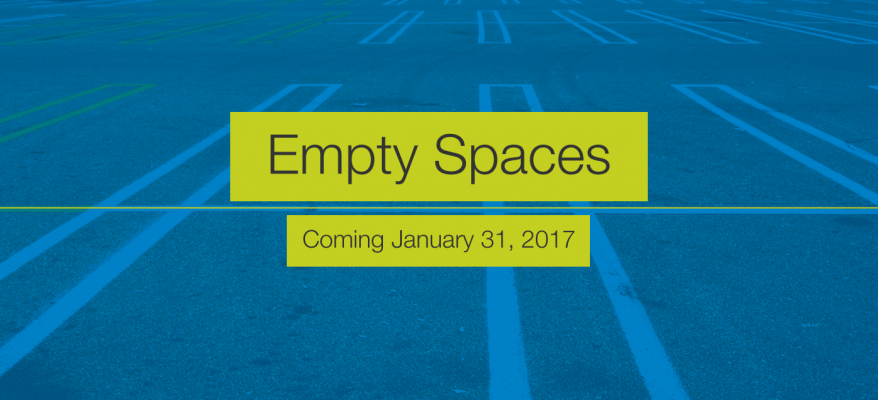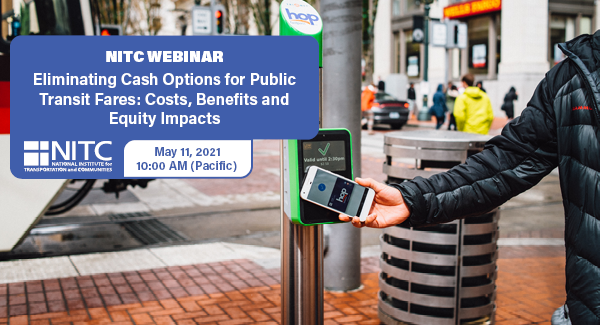The video begins at 0:51.
Smart Growth America hosted a webinar Jan. 31 on NITC research finding that standard guidelines lead to a drastic oversupply of parking at transit-oriented developments. That restricts the supply of housing, office and retail space while driving up the price.
The webinar marks the release of Smart Growth America's lay summary of the NITC report, called "Empty Spaces," which will be available to webinar attendees.
Watch the recorded webinar here.
The research, led by Reid Ewing of the University of Utah, is one of the first comprehensive data-driven reports to estimate peak parking and vehicle trip generation rates for transit-oriented development projects, as well as one of the first to estimate travel mode shares for TODs. Ewing analyzed data on actual parking usage and total trip generation near five transit stations: Redmond, Washington; Rhode Island Row in Washington, D.C.; Fruitvale Village in Oakland, California; Englewood, Colorado; and Wilshire/Vermont in Los...
Read moreThe video begins at 1:35.
View slides
Abstract: TriMet collects detailed ridership data from automatic passenger counters on buses and trains. In addition, an automatic vehicle location system provides specific information on how well buses and trains adhere to preset schedules. This presentation is an overview of how TriMet uses these data in designing and managing the transit network, ranging from developing regional service policies to making minor schedule adjustments on a bus line.
Speaker Bio: Ken Zatarain is TriMet Director of Service Planning and Scheduling. He has had several other positions at TriMet. Prior to joining TriMet, he worked at the federal and local government levels. Ken has a degree in Regional and City Planning from the University of North Carolina.
In the Engineering Building, Room 315
Abstract: Signal priority applications in the U.S. tend to be timid about giving priority to buses, because if they interrupt the green period of a competing traffic stream, they have no means of compensating that stream in the next signal cycle (by giving it a longer green period). Common restrictions set up to protect cross streets include preventing a priority interruption in consecutive signal cycles, having short extension intervals, and inhibiting priority when traffic is heavy on the cross street. In addition, most priority applications are limited to one or two simple control tactics, green extension and early green. As a result of these limitations, transit signal priority often falls far short of its potential, saving buses 3 seconds or less per intersection. We show how by using multiple intelligent signal priority tactics, in which traffic is aggressively interrupted but also compensated in the following cycle, large benefits can accrue to transit operations without any undue effect on general traffic. In a simulation study of four traffic signals around a large bus terminal in Boston, we found that average delay per bus could be reduced by almost 20 seconds per intersection with no change in average motorist delay.
PRESENTATION ARCHIVE
OVERVIEW
Many transit agencies plan to automate their fare collection and limit the use of cash, with the goals of improving boarding and data collection while lowering operating costs. Yet about 10% of adults in the United States lack a bank account or credit card, and many either rely on restrictive cell-phone data plans or don’t have access to internet or a smartphone.
This webinar will present part of a larger research project exploring these issues in the cities of Denver, Colorado, and Eugene and Portland–Gresham, Oregon. In this part, we explore the tradeoffs between reducing cash acceptance, ridership and the costs of fare collection systems. How much does it save to reduce cash acceptance, verses ridership and equity impacts?
We will also present a cost-effectiveness framework that combines a qualitative and quantitative analysis and use this model to explore case scenarios in our three cities. The model shows that adding a retail network to...
Read moreThe video begins at 2:15.
View slides
Abstract: TriMet has used a computer aided dispatch (CAD)/automatic vehicle location (AVL) system to manage bus and rail operations since the late 1990s. TriMet is currently in the process of updating the CAD/AVL system, and anticipates improvements in bus tracking and performance monitoring. This presentation will show how TriMet uses data from the system to support intelligent transportation systems (ITS) such as TransitTracker and automatic stop announcements in buses and trains, as well as to analyze transit operations such as on time performance and passenger loads.
Speaker Bios: Steve Callas is the Manager of Service and Performance Analysis at TriMet in Portland Oregon, where he is responsible for operations performance monitoring and analysis. This includes analyzing TriMet’s comprehensive automatic vehicle location and automatic passenger counter data archive. Additionally, Steve is involved in various transit operations research projection in conjunction with Portland State University and OTREC. Steve has been with TriMet for over 15 years.
David is an operations analyst with TriMet. He is involved in AVL data mining and analysis, safety analysis, automatic stop announcements, transit signal priority, and real-time...
Read moreThe video begins at 2:00.
View slides
Abstract: Urban arterials often represent complex venues of transportation operations, co-mingling non-motorized users with transit services and a wide variety of land uses and traffic patterns. This presentation presents results related to the evaluation of a new Adaptive Traffic Control System (SCATS) on Powell Boulevard in southeast Portland. The presentation will discuss challenges and opportunities associated with the evaluation of new technologies and the development of comprehensive urban arterial performance measures.
Speaker Bio: Miguel Figliozzi is an Associate Professor of Civil and Environmental Engineering at Portland State University. His diverse research interests include transit and traffic operations, bicycle and pedestrian modes, emissions and air quality modeling, and freight and logistics. He holds a MS from the University of Texas at Austin and a PhD from the University of Maryland College Park. Figliozzi is a member of the Transportation Research Board Network Modeling Committee, Freight and Logistics, and Intermodal Terminal Design Committees. Papers, reports, and more detailed information available at Figliozzi's webpage: http://web.cecs.pdx.edu/~maf/


